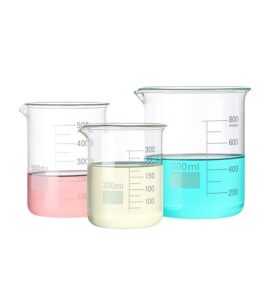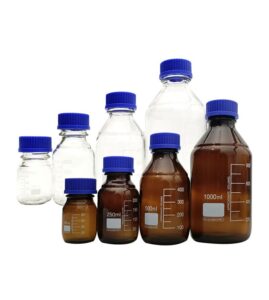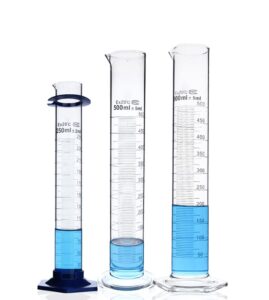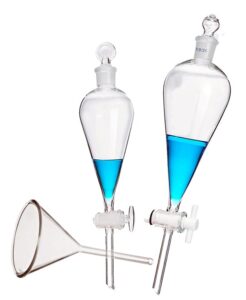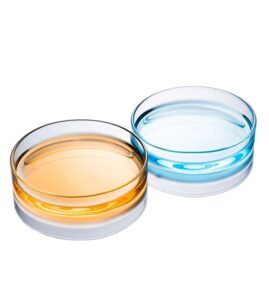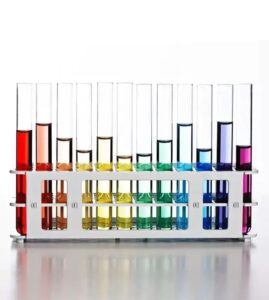Have you ever wondered about the science and precision behind the gleaming glass tubes in labs? What makes them so essential to experiments, and why are they handled with such care? Whether you’re a budding scientist or simply curious, understanding the art of using glass test tubes is crucial for any laboratory work.
Glass test tubes are indispensable in the lab for their versatility and precision in handling various substances. They are the unsung heroes that make accurate results possible. By mastering their use, you ensure not only the success of your experiments but also maintain a high standard of safety and efficiency.
Keeping your interest piqued is essential as we delve deeper into the world of laboratory glassware.
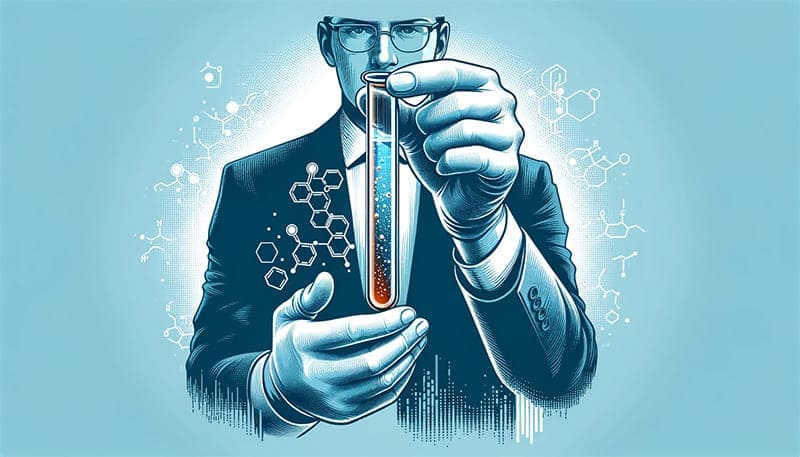
What Are Glass Test Tubes and Why Are They Important
Glass test tubes, often referred to as culture tubes or sample tubes, are small cylindrical tubes made of glass designed to hold substances for laboratory testing and experiments. They are important due to their ability to withstand high temperatures, resistance to chemical corrosion, and clarity, which allows clear observation of contents.
Types of Glass Used in Test Tubes: A Comprehensive Comparison
In the quest for scientific accuracy and precision, the type of glass used in test tubes can significantly influence experimental outcomes. Each material offers distinct properties and benefits suited to various applications. Understanding these differences is vital for selecting the right test tube for your needs.
| Type of Glass | Properties | Advantages | Best Suited For |
|---|---|---|---|
| Borosilicate | High thermal resistance, low thermal expansion, resistant to chemical corrosion | Withstands sudden temperature changes, durable, ideal for heating | Experiments involving high heat or rapid temperature changes |
| Soda-Lime | Most common glass, good chemical resistance, softer than borosilicate | Cost-effective, suitable for general laboratory use | General chemistry experiments, not involving extreme conditions |
| Quartz | Exceptional thermal and chemical resistance, transparent to UV light | Perfect for high-temperature work and spectroscopy | Experiments requiring UV light transparency or extremely high temperatures |
To effectively harness the potential of glass test tubes in your laboratory experiments, consider the specific requirements of your work and choose accordingly. Whether it’s the robustness of borosilicate, the economic efficiency of soda-lime, or the unique properties of quartz, each type of glass has its place in scientific research.
By incorporating this understanding of the various types of glass into your laboratory practices, you enhance both the quality and reliability of your experimental results. Let this guide serve as a beacon, leading you to informed decisions and successful outcomes in your scientific endeavors.

Effective Laboratory Practices: Mastering the Use of Glass Test Tubes
In the realm of scientific research, mastering the use of glass test tubes is a fundamental skill that significantly contributes to the accuracy and safety of experimental results. Understanding the proper steps and precautions is essential for any laboratory professional or student.
Here are the steps and precautions for properly using glass test tubes:
Preparing Glass Test Tubes
- Selecting the Appropriate Test Tube: Choose the appropriate glass test tube based on experimental requirements. Pay attention to the specifications, length, diameter, and shape of the tube. Also, select high-quality glass test tubes to ensure stability and heat resistance.
- Inspecting Appearance: Before use, check the appearance of the glass test tube for any damage. If there are any cracks, breaks, or defects, replace the test tube immediately.
- Cleaning the Test Tube: Thoroughly clean the glass test tube before use to avoid contaminating the sample or affecting the experimental results. Soak the test tube in detergent, clean the inside and outside surfaces with a soft brush, and then rinse with pure water. For tubes with severe oil contamination, use an alkaline detergent for cleaning.
- Drying the Test Tube: Dry the glass test tube before use to prevent moisture or contamination of the sample. The test tube can be dried in an oven or air-dried.
Operating Glass Test Tubes
- Filling with Samples: Pour the liquid or solid sample that needs to be heated or reacted into the glass test tube. Pay attention to the concentration and quality of the sample. Handle corrosive samples with extra care to avoid skin contact or inhaling harmful gases.
- Heating the Sample: Place the glass test tube on an appropriate heating device, such as an electric heating plate or alcohol lamp, for heating. Maintain even heating to prevent localized overheating, which could cause the sample to splash out or the test tube to break. For high-temperature heating experiments, pay special attention to safe operation to prevent burns or other accidents.
- Observing Changes: Observe the changes in experimental phenomena during heating, such as bubble formation or color change. If any abnormal conditions are detected, such as excessive bubbling or sudden color change, immediately stop heating and address the situation.
- Recording Data: Record experimental data promptly during the process for subsequent analysis and processing.
Post-Experiment Procedures
- Cleaning the Test Tube: Promptly clean the glass test tube after the experiment. Clean the inside and outside surfaces with detergent, then rinse thoroughly with pure water. For sticky or crystalline samples, soak and dissolve in an appropriate solvent before cleaning.
- Storing Samples: After the experiment, store any remaining samples in a sealed container to prevent moisture or contamination. Also, cover the test tube to prevent dust or other impurities from entering.
- Disposing of Waste: Dispose of experimental waste according to laboratory regulations to prevent environmental and health hazards.
Precautions
- Handle glass test tubes gently to avoid breaking or damaging them through forceful handling or dropping. Especially when handling test tubes, avoid contacting the mouth or neck of the tube with hands or other hard objects to prevent damage or injury.
- During heating, pay close attention to changes in experimental phenomena. Immediately stop heating and address any abnormal conditions, such as excessive bubbling or color change, to prevent safety incidents or damage to the glass test tube.
- Pay attention to safe operation, especially during heating, to prevent burns or other accidents. If unsure about the correct usage or operation, consult a mentor or professional to avoid accidents.
By following these detailed guidelines for using glass test tubes, scientists and students can enhance the quality of their experiments and maintain safety standards. Properly handling, observing, and maintaining these essential tools is the cornerstone of achieving reliable and successful outcomes in any scientific endeavor.
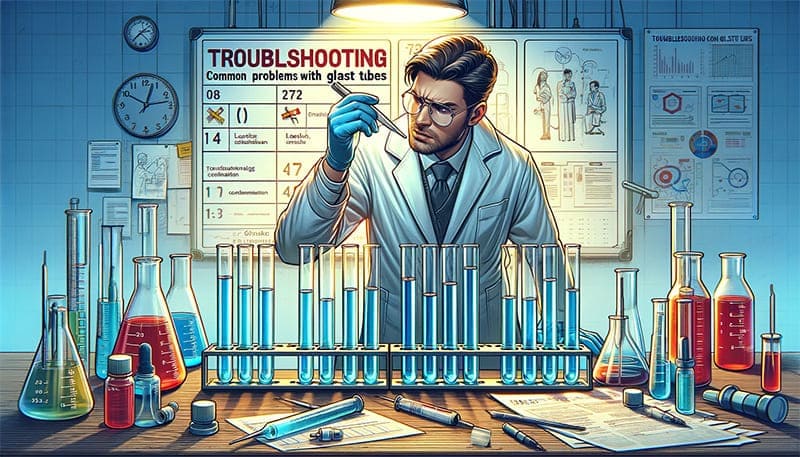
Troubleshooting Common Problems with Glass Test Tubes
Even with meticulous care and handling, encountering issues with glass test tubes is not uncommon in the laboratory. Recognizing and resolving these problems promptly can prevent compromised results and ensure safety. Here’s a guide to troubleshooting some of the most common issues related to glass test tubes.
1. Cracking or Breaking
- Problem: Glass test tubes can crack or break due to sudden temperature changes, mechanical shock, or pre-existing flaws.
- Solution: Always inspect test tubes for any minor cracks or defects before use. Avoid rapid temperature changes, and use a test tube holder or tongs for handling hot tubes. If a tube breaks, dispose of it safely and clean any spills immediately.
2. Contamination:
- Problem: Residues or contaminants in the test tube can affect experimental results.
- Solution: Clean test tubes thoroughly before and after each use. Use appropriate cleaning agents and ensure they are well-rinsed with distilled or deionized water. For persistent residues, consider soaking in a suitable solvent or using specialized cleaning equipment like a test tube brush.
3. Difficulties in Sealing or Opening:
- Problem: Sealing or opening test tubes, especially those under vacuum, can be challenging and may lead to accidents if not done correctly.
- Solution: When sealing, ensure the glass is evenly heated and softened before attempting to close the tube. Use appropriate tools and protective equipment. For opening, score the glass carefully and protect your hands and face from potential shattering. It’s often best to seek guidance or assistance if you’re unfamiliar with the technique.
4. Problems During Centrifugation:
- Problem: Test tubes might break or fail to properly separate substances during centrifugation.
- Solution: Always use test tubes that are appropriate for the speed and duration of the centrifugation. Check for the manufacturer’s specifications for maximum g-force resistance. Ensure tubes are properly balanced and securely fastened in the centrifuge. Inspect for any cracks or weaknesses before use.
By anticipating these common problems and implementing the solutions provided, you can mitigate risks and maintain a high standard of efficiency and safety in your laboratory work. Remember, when in doubt, always consult with a more experienced colleague or refer to your laboratory’s safety protocols. Your vigilance and proactive problem-solving are key to a smooth and successful scientific journey.

Diverse Test Tube Types: Comparative Guide to Applications, Methods, and Cautions
In laboratories, test tubes are classified based on their intended applications, which dictate their design, handling, and the precautions needed. Understanding these classifications is essential for accurate and safe experimentation. Here is a comparative guide to help you navigate the varied landscape of test tube types.
| Test Tube Type | Application Range | Usage Method | Precautions |
|---|---|---|---|
| Culture Tubes | Microbiological culturing and storage | Used for growing bacteria, yeast, or mold in a controlled environment | Sterilize before and after use; handle aseptically |
| Centrifuge Tubes | Separating substances by density | Used in centrifuge machines; can withstand high-speed rotations | Ensure balance in centrifuge; use tubes resistant to stress |
| Boiling Tubes | Heating liquids | Thicker walls to withstand boiling; used over open flames or heaters | Avoid rapid temperature changes; use heat-resistant gloves |
| Sample Tubes | Storing and transporting samples | Used for holding liquid, solid, or gaseous samples | Cap securely to avoid leaks; label clearly |
| Reaction Tubes | Chemical reactions and mixtures | Used to mix chemicals and observe reactions | Use appropriate size for the volume of reactants; monitor for pressure changes |
Different types of test tubes are designed with specific features to best accommodate the intended use, from the durability required for high-speed centrifugation to the clarity needed for observing microbial growth. When selecting a test tube for your application, consider not only the type but also the volume, durability, and compatibility with other equipment. Always follow proper laboratory protocols to ensure the safety and success of your experiments. With the right test tube in hand, you’re equipped to explore the exciting world of scientific discovery.
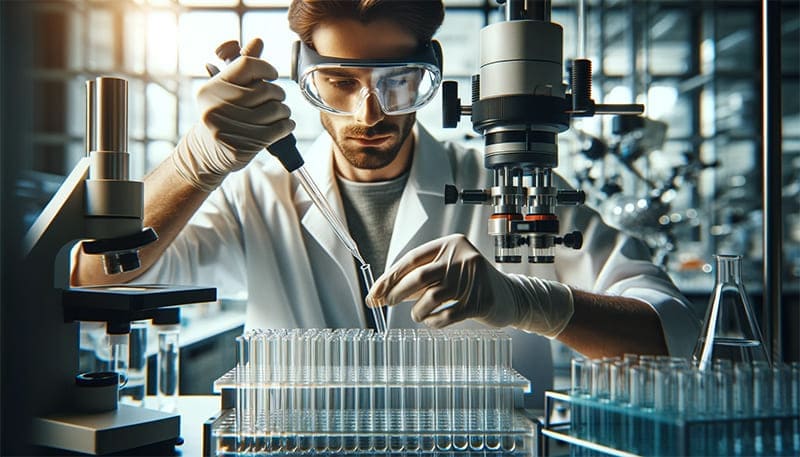
Advanced Usage Techniques for Glass Test Tubes
For the seasoned laboratory professional or the aspiring scientist looking to broaden their expertise, mastering advanced techniques for handling glass test tubes can significantly enhance experimental capabilities and outcomes. Here’s a deeper dive into some of the sophisticated methods used in laboratories worldwide.
1. Sealing Test Tubes Under Vacuum Conditions
- Purpose: Sealing under vacuum is crucial for preserving samples from contamination or for reactions requiring specific atmospheric conditions.
- Technique: The process involves heating the open end of the tube until it becomes malleable, then gently drawing the edges together to seal it, all while under a vacuum. This method requires precision and control to avoid shattering the glass or compromising the vacuum.
2. Opening Sealed Test Tubes
- Purpose: Properly opening a sealed tube, especially one under vacuum, is critical to maintaining the integrity of the sample and ensuring safety.
- Technique: Score the glass with a file where you wish to open it, then gently tap to break the seal. Be mindful of potential pressure differences and the type of substance contained within.
3. Handling Test Tubes During Centrifugation
- Purpose: Centrifugation is a common procedure to separate substances of different densities. Proper test tube handling ensures the safety and accuracy of this process.
- Technique: Ensure that the test tubes are properly balanced in the centrifuge. Use adaptors if the tubes do not fit the rotor cups perfectly. Always check for cracks or weaknesses in the glass before use, as the high-speed rotation can cause damaged tubes to shatter.
Incorporating these advanced techniques requires practice and an in-depth understanding of the physical properties of glass as well as the chemical nature of the substances involved. It’s always recommended to consult with experienced professionals or detailed procedural documents when attempting these methods for the first time. By mastering these advanced skills, you not only expand your repertoire as a scientist but also contribute to the overall success and safety of your laboratory’s operations.

Frequently Asked Questions About Using Glass Test Tubes
Navigating the world of glass test tubes in a laboratory setting can be intricate, with various considerations to keep in mind for their effective and safe use. Here, we address some frequently asked questions that arise when working with these essential lab tools.
1. Can all glass test tubes be directly heated?
- Not all. Borosilicate glass test tubes are best suited for direct heating due to their thermal resistance. Always verify the type of glass before applying heat.
2. How should I clean glass test tubes after use?
- Most can be cleaned with standard lab detergent and water, followed by thorough rinsing. Persistent residues might require specialized cleaning solutions or brushes.
3. Are glass test tubes reusable?
- Yes, most are reusable if they are cleaned and stored properly. However, some specific experiments might require disposable tubes to avoid cross-contamination.
4. What safety precautions should be taken when using glass test tubes?
- Always inspect for cracks or chips before use, handle with care to avoid breakage, and use protective equipment like gloves or goggles when heating or mixing dangerous chemicals.
5. How do I properly dispose of a broken glass test tube?
- Follow your laboratory’s safety protocols, typically involving placing the broken glass in a designated sharps container and not in regular waste bins.
By keeping these frequently asked questions and their answers in mind, you can enhance your proficiency and safety in using glass test tubes in any laboratory setting. Proper knowledge and handling of these tools are crucial in maintaining the integrity and reliability of your scientific work. Whether you’re a student just learning the ropes or a seasoned professional, a clear understanding of test tube usage is an invaluable asset in your scientific endeavors.
Conclusion
Dive deeper into the world of scientific discovery with the right tools and knowledge. “Mastering Glass Test Tubes” is more than just an article; it’s a gateway to enhancing your laboratory skills and outcomes. For an extensive range of test tubes to suit all your experimental needs, visit our collection here. Embrace precision, embrace science, embrace success!


